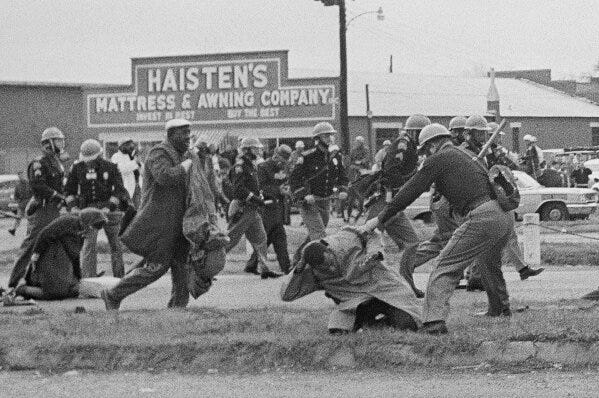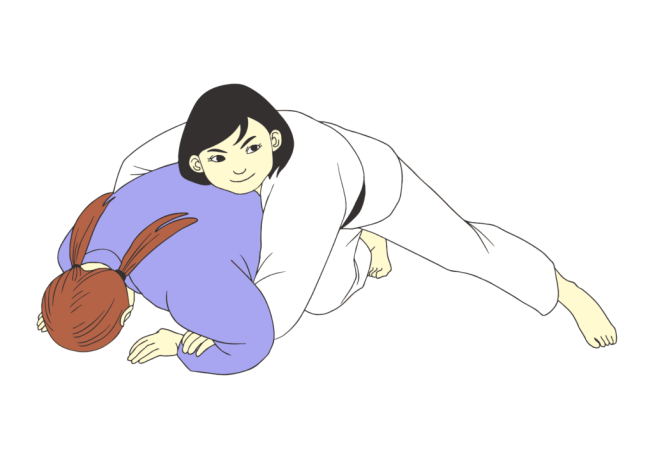
Welcome, peaceables! Now that we have zeroed in on the final Disaster Plan, let us delve deeper into one of the action steps in the plan: nonviolent passive resistance.
Definition
Though “passive” is crucial to our actions, it does not mean our resistance is without effort. On the contrary, it refers to conscious and intentional combat against tyranny1. It is based on the Gandhian principle of Satyāgraha सत्याग्रह, itself an outgrowth of the Indian teaching of ahiṃsā अहिंसा.
We use nonviolent passive resistance to obstruct and neutralize violence from tyrannical aggressors and elicit pity and sympathy from the populace to effect societal change and the institution of just laws.
We will most commonly use nonviolent passive resistance as a method of civil disobedience. Disobedience to the law, whether just or unjust, requires the willingness to be harassed2, arrested, imprisoned, or give up one’s life3. Resistance of any kind takes courage.
When would we need to employ nonviolent passive resistance? To confront the tyrants to protect the most vulnerable among us: to prevent deportation, to forestall any denaturalization program, to fight the jailing of teachers and librarians, to ensure the safety of LGBTQ+ individuals and those seeking abortions.
Since Trump has promised to invoke the Insurrection Act to shut down protests and mobilize red-state national guard units against blue states that resist his authoritarian agenda, we must employ nonviolent passive resistance against the military and police. We must be prepared to stand our ground, though our resistance will be “[n]ot without defeats, and great pain. But are there no defeats in war? No pain? What you cannot do is accept injustice. From Hitler, or anyone. You must make the injustice visible, and be prepared to die like a soldier to do so.”4
Tabletop Exercise
A tabletop exercise is an informal, discussion-based session in which a team talks through their roles and responses during an emergency, walking through one or more example scenarios. It’s a great way to get business continuity plans off the written page without the interruption of a full-scale drill: Rather than actually simulating a disaster, a group within the company gathers for a few hours to talk through a simulated crisis.5
Let us imagine what nonviolent passive resistance will look like if we attempt to repel the military or police, who may be coming to round up immigrants for detention. This is like running a tornado or fire drill in our heads.
Self-protection
The prime directive is to protect oneself at all times. The head is the most vulnerable part of the body. (See the photo of John Lewis being pummeled above. He suffered a fractured skull as a result.6) The military and police will be in body armor, and we should use protective gear, too. Riot gear can be expensive, but there are cheap alternatives. Of primary importance are helmets, which could be football or lacrosse helmets with guardian caps. Shields would be next in importance. Vests, shin guards, and forearm guards would complete the protective outfit if you can afford them.
Immoveability
When physical contact occurs, sit down. Force the military or the police to lift you to move you. If the aggressors are starting to move you, assume the defensive position known in judo, jiu-jitsu, and wrestling as the Turtle, depicted below. A tight Turtle is not easily moved, though an adept grappler could succeed in prying you out of it. It’s more probable that a military member is trained in the grappling arts than a police officer, but it still takes a high degree of skill to roll someone out of the Turtle.7
To perform this tabletop exercise, wear your protective gear and visualize how you will stand up against a soldier or police officer trying to push you out of the way. If you have a partner, practice pushing each other safely. Go down into the Turtle and imagine how you would defend yourself against someone trying to lift or flip you. Your partner can try to move you to give you a real sense of how it feels. Also, imagine standing shoulder to shoulder with your fellow resistors while practicing. The ideal tabletop would be to get together with multiple resistors and practice.
If you wish to become a serious resistor, take training in the grappling arts.
Strength, solidarity, and peace!
Pathfinder
On the other hand, an adept grappler could use the Turtle as an offensive position, as seen in this video.











Good advice here, Steve. Thanks for sharing it with us.